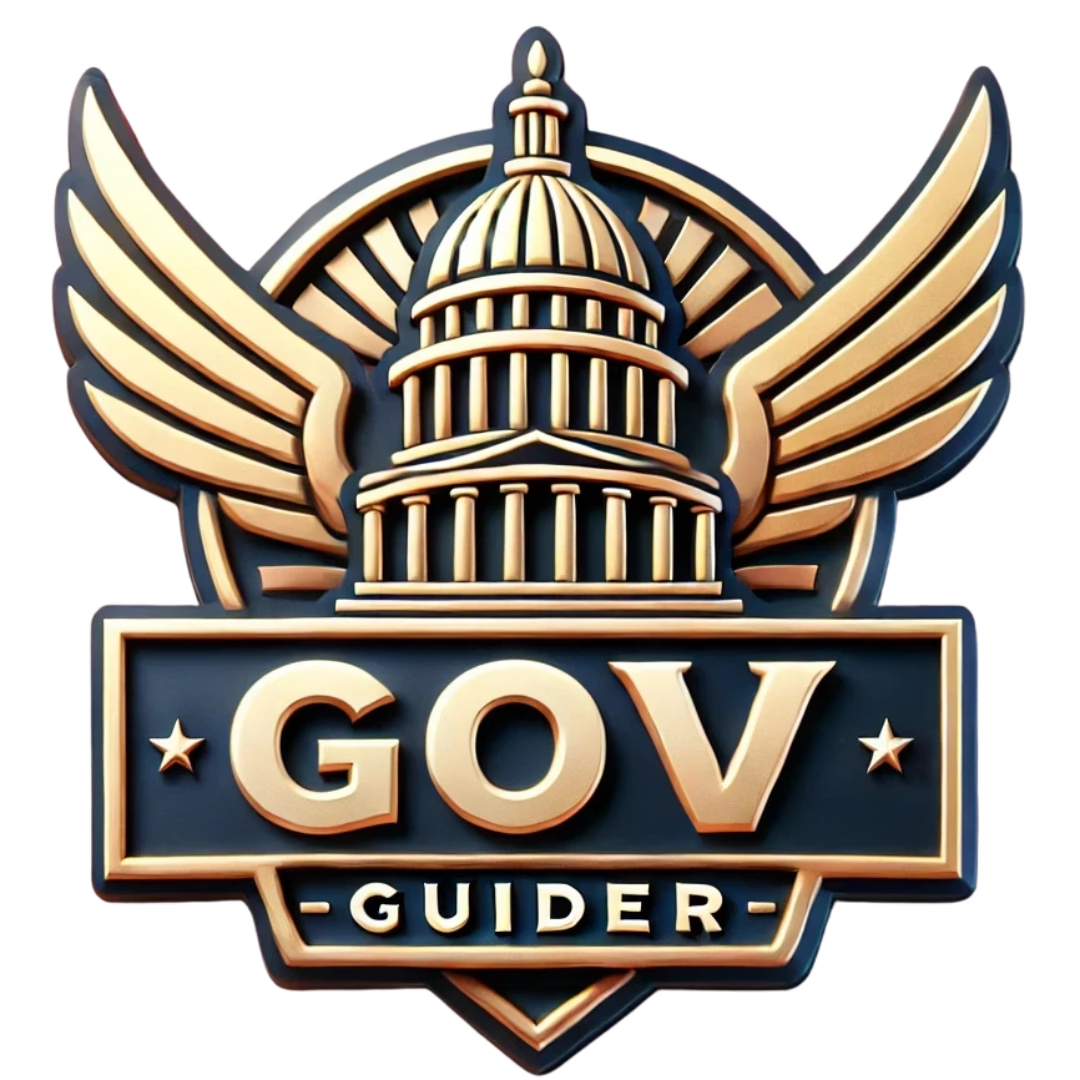Key Takeaways
- Emergency government assistance offers vital cash aid, including up to $700 from FEMA, to help individuals during financial crises.
- Applying for emergency cash assistance online involves identifying needs, visiting government websites, and gathering necessary documentation.
- Eligibility for hardship relief programs is based on income assessment, basic needs coverage, and supporting documentation.
- Various government relief programs are available, including TANF, SNAP, and emergency housing assistance, providing immediate support for essential expenses.
- Understanding FEMA’s maximum payouts, such as up to $43,600 for housing assistance, is crucial for disaster recovery.
- Resources like Benefits.gov and local charities can guide individuals in navigating the application process for financial aid.
In times of crisis, understanding how to access emergency government assistance can be a lifeline for those in need. This comprehensive guide, titled Navigating Emergency Government Assistance: Essential Steps to Access Cash Aid and Relief Programs for Immediate Financial Help, will equip you with the knowledge to secure vital resources during challenging times. We will explore how individuals are receiving $700 from FEMA through various government assistance programs, and outline the steps to apply for emergency cash assistance online. Additionally, we will delve into eligibility criteria for hardship relief programs and discuss the maximum payouts available through FEMA’s financial assistance initiatives. Whether you are seeking cash assistance for unemployed individuals or looking for immediate assistance options, this article will provide you with the essential insights and actionable steps to navigate the complex landscape of government relief programs. Join us as we uncover the pathways to financial support and empower you to take control of your situation.
How are people getting $700 from FEMA?
Understanding FEMA’s Cash Assistance Programs
FEMA’s Critical Needs Assistance Program is a vital resource for individuals affected by federally declared disasters. This program offers a one-time payment of $700 per household to assist with urgent needs. The funds are intended for immediate necessities such as water, food, first aid supplies, prescription medications, infant formula, diapers, consumable medical supplies, durable medical equipment, personal hygiene products, and fuel for transportation.
To apply for FEMA disaster assistance, individuals can call 1-800-621-FEMA (3362) or register online at FEMA.gov. Eligibility for Critical Needs Assistance requires applicants to complete a FEMA application, provide valid identity verification, and reside in an area designated as a disaster zone by the President.
It’s important to note that if you have insurance, you must file a claim with your insurance provider first, as FEMA cannot duplicate benefits for losses covered by insurance. For further guidance, you can refer to resources available on FEMA’s official website or consult Gov Guider for additional assistance related to disaster recovery.
Overview of Emergency Management Assistance Compacts (EMAC)
The Emergency Management Assistance Compact (EMAC) is a state-to-state system designed to facilitate the sharing of resources during emergencies. This compact allows states to provide mutual aid to one another, ensuring that assistance can be mobilized quickly in response to disasters. EMAC is particularly crucial during large-scale emergencies when local resources may be overwhelmed.
Through EMAC, states can share personnel, equipment, and other resources, enhancing the overall effectiveness of disaster response efforts. This collaborative approach not only speeds up the delivery of emergency assistance but also strengthens the resilience of communities facing crises. Understanding how EMAC operates can help individuals and local governments better prepare for and respond to emergencies, ensuring that they can access the necessary support when it is needed most.

How to Get Money in an Emergency Situation?
In times of financial distress, knowing how to access emergency government assistance can be crucial. There are several steps you can take to secure immediate funds to alleviate your financial burden. Below are detailed actions you can follow to apply for emergency cash assistance online and explore various government relief programs.
Steps to Apply for Emergency Cash Assistance Online
When you find yourself in need of immediate financial help, it’s essential to act quickly and efficiently. Here’s a step-by-step guide on how to apply for emergency cash assistance online:
- Identify Your Needs: Determine the amount of money you require and the specific purpose, such as rent, utilities, or food. This clarity will help you find the right assistance programs.
- Visit Government Websites: Start by visiting Benefits.gov to explore available government assistance programs. This site provides a comprehensive list of resources tailored to your needs.
- Gather Required Documentation: Most applications will require proof of income, identification, and details about your financial situation. Having these documents ready can expedite the process.
- Complete the Application: Fill out the online application for emergency assistance. Ensure that all information is accurate to avoid delays. Many programs allow you to apply directly through their websites.
- Follow Up: After submitting your application, keep track of its status. Some programs may require additional information or documentation, so be prepared to respond promptly.
By following these steps, you can effectively navigate the application process for emergency cash assistance, ensuring you receive the support you need during a crisis.
Exploring Government Relief Programs for Immediate Assistance
In addition to applying for emergency cash assistance, there are various government relief programs available that can provide immediate financial support. Here are some options to consider:
- Emergency Assistance Programs: These programs are designed to provide short-term financial help for individuals facing unexpected hardships. They can cover expenses like rent, utilities, and food.
- Public Assistance Programs: Programs such as Temporary Assistance for Needy Families (TANF) offer cash assistance to families in need. Eligibility varies, so check the specific requirements for your state.
- Cash Assistance for Unemployed Individuals: If you are unemployed, you may qualify for unemployment benefits or other government cash assistance programs that provide financial support while you seek new employment.
- Relief Assistance Programs: Organizations like the Red Cross offer emergency assistance resources, including financial aid for those affected by disasters or crises.
- Community Resources: Local charities and non-profits often have programs to assist individuals in financial distress. Research community resources that may provide additional support.
By exploring these government relief programs, you can find the immediate assistance you need to help stabilize your financial situation during emergencies.
Who is eligible for the hardship relief program?
Understanding eligibility for the hardship relief program is crucial for those seeking emergency government assistance. This program is designed to support individuals facing financial difficulties, ensuring they can access necessary resources during challenging times. Here are the key criteria that determine eligibility for various government assistance programs.
Criteria for Government Assistance Programs
Eligibility for the hardship relief program primarily hinges on your financial situation, specifically your income and necessary living expenses. Here are the key criteria for qualification:
- Income Assessment: The IRS evaluates your total income against allowable living expenses, which include:
- Housing costs (rent or mortgage)
- Utilities (electricity, water, gas)
- Food and groceries
- Clothing
- Transportation (public transit or vehicle expenses)
- Healthcare expenses (medical bills, insurance premiums)
- Basic Needs Coverage: To qualify for hardship status, your income must be insufficient to cover these essential living expenses. If your income barely meets or falls short of these needs, you may be eligible for the program.
- Documentation: Applicants must provide documentation that supports their financial situation, including pay stubs, bank statements, and bills, to demonstrate their inability to meet basic living expenses.
- Additional Considerations: Special circumstances such as unemployment, medical emergencies, or other unforeseen financial burdens may also be taken into account when determining eligibility.
For more detailed information and assistance, you can visit the IRS website or consult resources like Gov Guider, which can provide guidance on navigating the application process and understanding your rights under the hardship relief program.
Financial Hardship Assistance Programs Explained
Financial hardship assistance programs are designed to provide emergency assistance to individuals and families facing unexpected financial challenges. These programs vary by state and can include various forms of support, such as:
- Cash Assistance Programs: These programs offer direct financial aid to help cover essential living expenses, such as rent, utilities, and food.
- Food Assistance: Programs like the Supplemental Nutrition Assistance Program (SNAP) provide food benefits to eligible individuals and families.
- Healthcare Support: Medicaid and other healthcare assistance programs help low-income individuals access necessary medical care.
- Emergency Housing Assistance: This includes programs that provide temporary housing solutions for those facing eviction or homelessness.
To explore available options, visit Benefits.gov for a comprehensive list of government relief programs tailored to your needs. Understanding these programs can empower you to seek the immediate assistance necessary to regain stability during tough times.
How can I get money if I’m struggling?
If you’re facing financial difficulties and need immediate support, there are several government cash assistance programs available to help you navigate this challenging time. These programs are designed to provide emergency government assistance to individuals and families in need. Here are some key options to consider:
Government Cash Assistance Programs for Individuals
To get money if you’re struggling, consider the following options:
- Temporary Assistance for Needy Families (TANF): This federal program offers time-limited cash assistance to eligible low-income families. Applications can be made at your local TANF office. For more information, visit the U.S. Department of Health & Human Services website.
- Unemployment Benefits: If you’ve lost your job, file for unemployment benefits through your state’s unemployment office. Eligibility and amounts vary by state, so check your local guidelines.
- Food Assistance: The Supplemental Nutrition Assistance Program (SNAP) helps low-income individuals and families afford food. You can apply online or at your local SNAP office. More details can be found on the USDA Food and Nutrition Service website.
- Emergency Housing Assistance: If you’re facing homelessness or housing instability, seek emergency housing assistance programs available in your area. The U.S. Department of Housing and Urban Development (HUD) provides resources for finding local assistance.
- Rental Assistance: Look into programs that offer rental assistance to help cover your monthly rent. Local housing authorities often administer these programs.
- Utility Bill Assistance: Various programs can assist with utility costs, including the Low-Income Home Energy Assistance Program (LIHEAP). Check your state’s resources for eligibility.
- Contact 211: The United Way 211 service can connect you with local resources and services tailored to your needs, including financial assistance.
- Community Loans and Assistance: Explore community-based organizations that provide loans or financial assistance. Organizations like credit unions often have programs for those in need.
- Charities: Many local and national charities offer financial assistance and resources for individuals facing financial hardship. Research charities in your area that focus on financial support.
- Sell Unwanted Items: Consider selling electronics, furniture, or other items you no longer need through online marketplaces or local consignment shops.
- Work Today for Fast Cash: Look for immediate work opportunities, such as gig jobs (e.g., rideshare driving, food delivery) or temporary positions that pay quickly.
- Pawn Valuable Items: If you own valuable items, consider pawning them for quick cash. Be sure to understand the terms of the pawn agreement.
- Credit Card Cash Advance: While this can provide immediate funds, be cautious of high-interest rates and fees associated with cash advances.
- Payday Alternative Loans: These loans can offer quick cash but come with high fees. Ensure you fully understand the terms before proceeding.
- Personal Loans: Investigate personal loans from banks or credit unions, which may offer lower interest rates than payday loans.
- Create a Budget: Develop a spending plan to track your income and expenses, helping you manage your finances more effectively.
- Reduce Debt: Focus on paying down high-interest debt to free up more of your income for essential expenses.
- Seek Financial Counseling: Professional financial advisors can provide guidance on managing your finances and improving your financial situation.
- Learn to Save: Start building an emergency fund, even if it’s a small amount, to prepare for future financial challenges.
Cash Assistance for Unemployed Individuals
Unemployed individuals can access specific cash assistance programs tailored to their needs. These programs include:
- Unemployment Insurance: This program provides temporary financial assistance to individuals who have lost their jobs through no fault of their own. Eligibility requirements vary by state, so it’s essential to check your local unemployment office.
- Emergency Cash Assistance: Some states offer emergency cash assistance programs for unemployed individuals facing immediate financial hardship. These programs can provide quick relief to help cover essential expenses.
- Relief Assistance Programs: Various relief assistance programs are available at the local and state levels, designed to support unemployed individuals. Research local resources to find programs that can provide immediate assistance.
For additional resources, you can explore Gov Guider, which provides information on government assistance programs tailored to your needs.

What is the most FEMA will pay out?
Understanding the maximum payout limits from FEMA is essential for individuals seeking emergency government assistance after a disaster. FEMA provides various forms of financial aid to help those affected by emergencies, ensuring that they can recover and rebuild their lives. The key components of FEMA’s financial assistance include housing assistance and other needs assistance, both of which are crucial for disaster recovery.
Overview of FEMA’s Maximum Payout Limits
FEMA’s assistance is structured to address immediate and long-term needs following a disaster. Here’s a breakdown of the maximum payouts:
- Housing Assistance: FEMA can provide up to $43,600 for housing assistance, which includes funds for home repairs and temporary housing solutions. This financial support is crucial for individuals and families displaced by disasters.
- Other Needs Assistance: In addition to housing, FEMA offers up to $43,600 for Other Needs Assistance. This can cover essential expenses such as medical bills, personal property loss, and other disaster-related costs that are not covered by insurance.
- Initial Serious Needs Assistance: For immediate needs, FEMA has established a maximum payout of $770 for the Initial Serious Needs Assistance program. This is designed to provide quick relief for urgent necessities following a disaster.
It is important to note that FEMA’s assistance is intended to supplement existing insurance coverage rather than replace it. If you have insurance, FEMA will only cover the costs that exceed your policy limits. For homeowners whose insurance does not fully cover the damages incurred during a disaster, FEMA can provide assistance to cover the difference, up to the maximum payout limit.
Understanding Emergency Public Assistance Benefits
Emergency Public Assistance (EPA) benefits are designed to support communities in the aftermath of a disaster. These benefits can include funding for debris removal, emergency protective measures, and the repair of public infrastructure. The EPA program is vital for restoring community services and ensuring that affected areas can recover effectively.
For more detailed information about FEMA assistance and eligibility, you can visit the official FEMA website or consult resources like Gov Guider, which provides guidance on navigating federal assistance programs.
What is the maximum amount FEMA will pay?
FEMA provides crucial financial assistance to individuals and families affected by disasters, ensuring they can recover and rebuild. For Fiscal Year 2024, the maximum amount FEMA will pay for home repairs is $42,500. This assistance is specifically designed for homeowners who have sustained damage due to federally declared disasters. To qualify, homeowners must demonstrate that the damage was a direct result of the disaster, and the funds can be utilized for essential repairs that restore safe and sanitary living conditions.
In addition to home repairs, FEMA’s financial assistance can also cover other necessary expenses related to the disaster recovery process. It’s important to understand the eligibility criteria and application process to access these funds effectively. For more detailed information, you can refer to FEMA’s official guidelines or visit the Gov Guider website, which offers resources for navigating federal assistance programs.
Detailed Breakdown of FEMA’s Financial Assistance
FEMA’s financial assistance encompasses various programs aimed at helping individuals and families recover from disasters. The primary components include:
- Individual Assistance Program: This program provides cash assistance for temporary housing, home repairs, and other disaster-related expenses.
- Public Assistance Program: This program supports state and local governments in their recovery efforts, covering costs for debris removal and emergency protective measures.
- Hazard Mitigation Assistance: This funding helps communities implement projects that reduce future disaster risks, ensuring long-term resilience.
Understanding these components can help individuals determine which programs they may qualify for and how to apply for emergency cash assistance. For further insights into government assistance programs, you can explore Benefits.gov for comprehensive information.
Exploring $7,000 Government Grant Coronavirus Options
In response to the COVID-19 pandemic, various government relief programs have been established to provide immediate assistance to those in need. One notable option is the $7,000 government grant related to coronavirus relief. This grant aims to support individuals and families facing financial hardships due to the pandemic.
Eligibility for these grants typically includes criteria such as income level, employment status, and the impact of COVID-19 on personal finances. It’s essential to stay informed about the application process and deadlines to ensure you can access these funds when needed. For more information on available relief assistance programs, consider visiting USA.gov, which serves as a comprehensive resource for government services and support.
Do I qualify for any government assistance?
Determining your eligibility for emergency government assistance can be a crucial step in securing the financial help you need. Various government assistance programs are designed to support individuals facing financial hardships, but the criteria can vary significantly depending on the program.
Assessing Eligibility for Welfare Benefits
To qualify for welfare benefits, you typically need to meet specific income and residency requirements. Most programs require applicants to demonstrate financial need, which is often assessed through income limits based on household size. Here are some key factors to consider:
- Income Level: Your total household income must fall below a certain threshold, which varies by state and program.
- Residency: You must be a resident of the state where you are applying for assistance.
- Citizenship Status: Most programs require applicants to be U.S. citizens or legal residents.
- Age and Family Status: Some programs prioritize families with children, the elderly, or individuals with disabilities.
For detailed information on eligibility criteria, visit Benefits.gov, where you can find resources tailored to your specific situation.
Resources for Finding Government Cash Assistance Programs
If you need immediate assistance, several resources can help you locate government cash assistance programs available in your area:
- State Government Websites: Each state has its own website that lists available assistance programs. Check your state’s official site for local resources.
- USA.gov: This official U.S. government website provides a comprehensive overview of various government relief programs and how to apply for them. Visit USA.gov for more information.
- Local Nonprofits and Charities: Organizations like the Red Cross offer emergency assistance and can guide you through the application process for government aid.
By utilizing these resources, you can better understand your options and take the necessary steps to apply for emergency cash assistance effectively.




